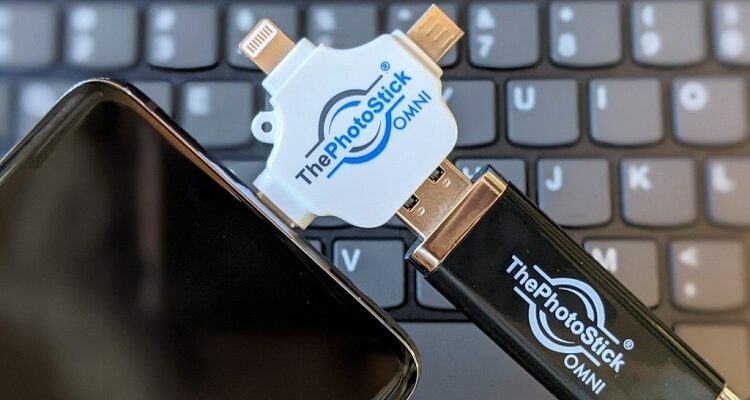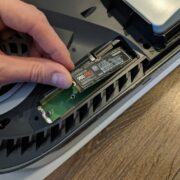If you are looking for a storage device that works with multiple computers, then hopefully this mini Photo Stick Omni review will point you in the right direction.
This device connects to the computer and organizes files by size. It also works with many different computers, so you won’t need to worry about third-party software. To use it, all you need to do is connect it to your PC or smartphone via the USB port, and all your photographs and videos will be automatically backed up.
This device also comes with a universal attachment that can be plugged into other devices that do not have USB ports. That way, you can use it to back up photos from your cell phone or another mobile device, and then transfer them to your computer. One of its best features is its compatibility. You can use it to transfer files from one device to another, as well as copy them from one computer to another. This makes it an excellent device for those who want to back up pictures on the go.
The PhotoStick Omni works with many different file formats. It supports files from Photoshop.psd and WMV files. It is also capable of handling spat files. With a capacity of 32 to 64 GB, it is capable of storing nearly 60,000 photos and videos. The higher-end versions are capable of storing more than one hundred thousand photos. If you’re concerned about storage space, you can also look for a cheaper device.
Table of Contents
Is a Photo Stick Better Than an External Hard Drive?
First, you might be wondering if you should buy a Photo Stick instead of an external hard drive. The answer to that question depends on your own needs. In this article, we’ll look at the advantages of both. A Photo Stick has the advantage of being portable. You can carry it anywhere you go, and it’s easy to find your files, whether they’re saved on your hard drive or on the Photo Stick. It’s also possible to create backups of all your files with a Photo Stick.
A USB photo stick has a USB Type-C connection on one end, and a USB-A connection on the other. This gives the photo stick great versatility. Some USB-C photo sticks feature a micro-USB function as well. The maximum writing and reading speeds are 80MB/s, and 30MB/s, respectively. A USB-C photo stick can be as small as 4 inches and resembles the size of a credit card.
Another major advantage of a Photo Stick is that it requires no additional software or settings to operate. It contains all the necessary operating software on the device, so you don’t have to worry about installing anything. The Photo Stick also has an inbuilt memory card slot, so you won’t have to worry about installing it on your computer. If you’re unsure how to install or remove it, just follow the instructions on your computer screen.
What is the Difference Between a Photo Stick and a Flash Drive?
A photo stick and a flash drive are similar in functionality, but they do have some differences. A photo stick is used to reserve and move media files, while a flash drive is more flexible. The former is designed to back up specific media files. A photo stick is plugged into your computer, while a flash drive can store and dispatch any type of file. Both devices have their advantages and disadvantages, so make sure you decide on the right type for your needs.
Generally, the Photo Stick has a higher capacity than a flash drive and is often used for storing large files. For further information on storage options, check out Simp City. Unlike a flash drive, a Photo Stick comes with built-in backup software and is compatible with various computers and operating systems. It’s an excellent choice for storing media files, as it can hold many more images than a traditional flash drive.
The Photo Stick works with the standard exiting programs on your computer. It doesn’t need an internet connection or cloud storage, nor does it require a password to use. It also doesn’t copy files from another device. That means you won’t lose important files while you travel! The Photo Stick is more convenient for those who are frequently away from their computers. And with a photo stick, you can transfer photos and other media to another computer in seconds.
How Does PhotoStick Transfer Files?
There are a variety of file types that Photo Stick can transfer. It supports the most common types of picture files, including JPEGs and PNGs. But it can also handle less-common file types, such as NRW, CRW, KDC, and TIF. It also supports some video files, including MPEG 4 and VID. Here are some tips for transferring your photos.
– If you have limited storage space, the Photo Stick can be a good option. It allows you to transfer files from one device to another without using up any of your computer’s memory. You can even back up your photos onto Photo Stick, so you don’t have to worry about losing them. Just make sure you backup your photos before you start using Photo Stick. It also prevents your computer from being damaged by sudden hard disk death or venomous viruses.
– The PhotoStick app can only transfer photos that are original, and it filters out duplicate photos. Many computers contain several copies of the same photo, as users download the same image multiple times. The PhotoStick app will only copy one copy of a file, so you don’t waste space on duplicate images. This is good news for graphics designers and professional photographers who want to keep every photo.
– Does Photo Stick require an Internet connection? Photo Stick is compatible with all Windows and Mac operating systems. It doesn’t require a password or Internet connection to work. It uses the hard drive for most operations. This means that Photo Stick does not require an internet connection to use it. It also does not require any external files or apps. There are no hidden costs or subscription fees, and there are no external programs or files to download.














